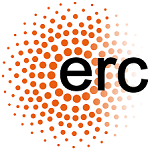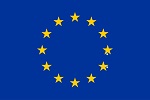Low frequency radio search and study of exoplanet magnetospheres and star-planet plasma interactions Section
Résumé du projet :
The project aims at the first confirmed detections and subsequent in-depth study of low-frequency radio emissions from exoplanets.
The origin of the emissions can be the magnetosphere of the exoplanet or the plasma interaction with its parent star. Confirmed detections will open the new field of comparative exo-magnetospheric physics and exo-space weather, as well as open a new window to study exoplanets, their magnetic field, interior structure, rotation, inclination, and even habitability. The magnetospheres of solar system planets are all very different, although emerging from the same basic plasma physics laws. Expanding the parameter space sampled by exploring different stellar luminosities and winds properties, planetary magnetic fields, geometries of interaction, will allow us to identify fundamental processes and separate them from peculiar characteristics, as was done in the last 25 years for planetary formation. Although recent observations at 100-200 MHz from large modern radiotelescopes may be revealing the first star-planet plasma interactions (to be confirmed), I show why our search must be performed at the lowest frequencies observable from the ground, 10 to 85 MHz. The world’s most sensitive instrument in this range, NenuFAR, of which I am principal investigator, starts its operations, and I will use it to conduct the largest ever exoplanet search program at radio frequencies. The analysis tools have been developed and tested with LOFAR, and the frame for interpreting theoretically the detected signals is ready, and I have taken a large part at all these developments. While studying the northern low-frequency sky with NenuFAR, this project will also
prepare our exploration of the southern sky with SKA. It successful, it will represent a revolutionary development in astrophysics, ushering an entirely new era.
Date de début :
Date de fin :
Budget Observatoire de Paris :
Budget total projet : 2 126 250 €
This project has received funding from the European Union’s Horizon 2020 research and innovation programme under Grant Agreement no 101020459
Liens :


